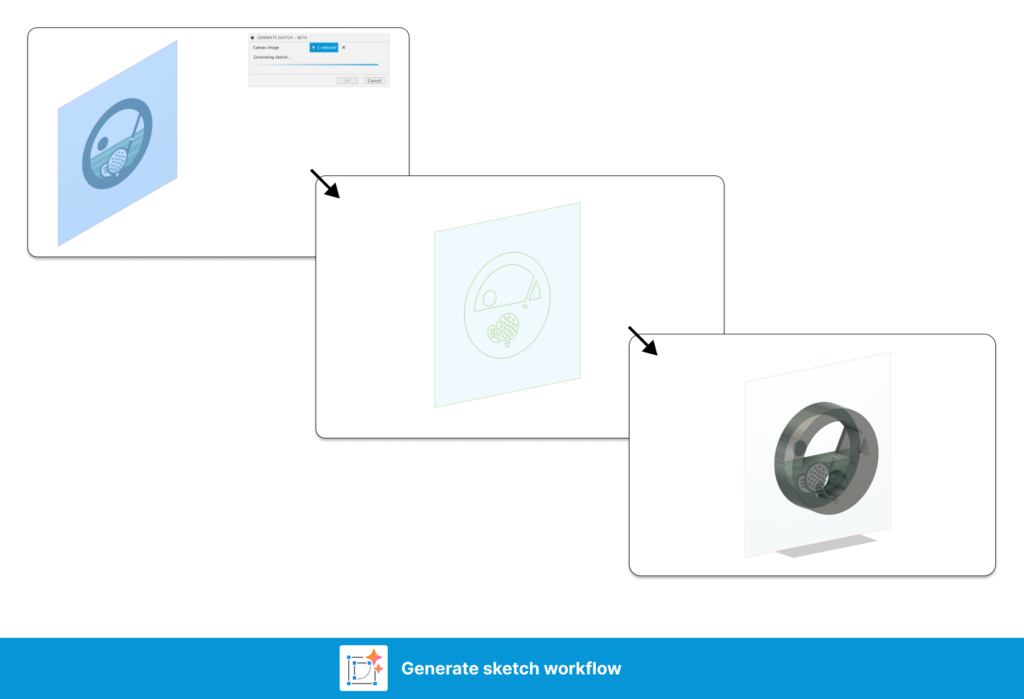& Construction

Integrated BIM tools, including Revit, AutoCAD, and Civil 3D
& Manufacturing

Professional CAD/CAM tools built on Inventor and AutoCAD
3 min read
This post is also available in: 日本語 (Japanese)

It feels like we’ve been living in the world of Generative AI for at least a decade, but in reality, it’s been just over a year since OpenAI changed the industry with ChatGPT. Since then, use of Generative AI tools has already become commonplace.
As a response to the market, many companies are researching ways to leverage this technology. Some with a lot of proprietary data have gone into development mode to create their own solutions, while others are adopting what’s already available or waiting for the next big thing.
In the design and manufacturing industries in particular, the time has come for more sophisticated and high-precision end-to-end workflows to take advantage of Generative AI. Autodesk has been researching ways to leverage Generative AI tools in our own products, like Fusion. One of the results is Project Salvador, named as a playful nod to DALL-E, which is a nod to the famous Spanish surrealist artist. Our goal with Project Salvador was to answer the question: What existing third-party AI models can we chain together to deliver a meaningful experience to Fusion users?
Our research in this area led us to believe that enhanced design ideation in Fusion would be very beneficial to product designers. It would allow creators to use Fusion not only for converting their dreams into reality but also for generating and finessing their dreams.

Our goal is to always maintain the freedom to plug in the best-in-class models into the desired Project Salvador workflows. So, as these models change and evolve rapidly every few months, we’re able to switch them out as needed to continue delivering the best Generative AI experience.
Project Salvador Beta is now available on the Autodesk App Store as a Fusion plug-in that chains third party AI models together with Fusion to create seamless workflows between the tools. Essentially, we’re introducing these third-party AI models into Fusion through APIs and, thus, expanding Fusion APIs. This first version of Project Salvador is based on OpenAI GPT4 Turbo, DALL-E or Stable Diffusion models, and Vectorizer AI to support the following workflows:

The research prototype that was based on the paper 3DALL-E: Integrating Text-to-Image AI in 3D Design Workflows (written by the Autodesk Research team in 2022 and presented at DIS in 2023) gave us a head start with developing the first prototype of Project Salvador.
To learn more about Project Salvador, watch the below video:
It is important to note that Autodesk is not sending your data to the participating third-party AI models. Users submit their search queries and seed images if they chose to. In Project Salvador Terms of Use, published on the Autodesk App Store, you can find linked terms of use for all the underlying technologies. Results returned by the third-party models might be non-unique to your query based on the nature of that technology. Autodesk cannot guarantee output quality from the third-party models, we’re just providing you with access to the tools that might make a difference in your work.

Check out Project Salvador on the Autodesk App Store to see how it can enhance your product ideation process. The future of Project Salvador will be decided based on the feedback you provide. Let us know what we got right and what could use some improvement.
Take it for a spin and see where your creativity will take you! We would love to see some of your creations posted on our forums.
By clicking subscribe, I agree to receive the Fusion newsletter and acknowledge the Autodesk Privacy Statement.
Success!
May we collect and use your data?
Learn more about the Third Party Services we use and our Privacy Statement.May we collect and use your data to tailor your experience?
Explore the benefits of a customized experience by managing your privacy settings for this site or visit our Privacy Statement to learn more about your options.